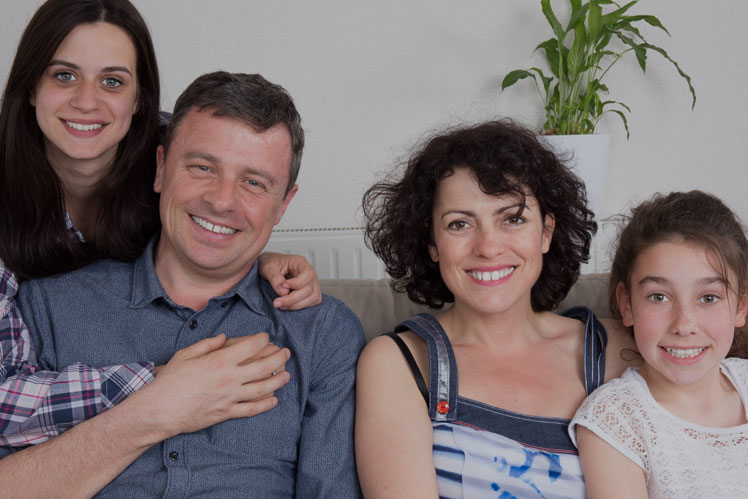Registered Disability Savings Plans (RDSPs) have been around since 2008 helping Canadians with a severe and prolonged disability, save for their future. RDSPs can be established for those who qualify for the disability tax credit (T2201) offering a tremendous bonus to those eligible in the form of generous government grants, tax sheltered investment growth and flexibility around investment choices.
Those who have a disability but are still able to enter into a contract can open their own RDSP. For disabled minors or those unable to enter into a contract, a qualifying family member can become a plan holder in charge of setting up and managing the RDSP for a disabled beneficiary. Investment options are many as RDSP plan holders can consider GICs, mutual funds, stocks or ETFs.
Similar to an RESP but different
Contributions to an RDSP are not tax deductible but earnings and growth within the plan grow on a tax-deferred basis with the Federal Government also providing contributions along the way. In this way and RDSP is similar to an RESP. However, Government contributions to eligible beneficiaries in the form of both Canada Disability Savings Grants and Canada Disability Savings Bonds are more generous in the case of an RDSP.
Disability Savings Grants (CDSGs)
Savings grants are paid into RDSPs by the Federal Government to match contributions that are made by others including the beneficiary or family and friends. Up to $3,500 per year or $70,000 over the beneficiary’s lifetime can be earned as grants. Grants can be received on contributions made until December 31 of the year in which the beneficiary turns 49 years of age. Grants are subject to an income test, based on the family’s income if the beneficiary is 18 or under, and on the beneficiary’s income if older. Those thresholds are indexed each year to inflation but for 2017 they are as follows: For any income up to $91,831, the CDSG is equal to 300% of the first $500 contributed, and 200% of the next $1000, giving a maximum annual entitlement of $3500. For those with the higher income, the CDSG is limited to 100% on the first $1000 contributed each year, which still doubles the contribution.
As an example for someone with a family net income of less than $91,831, by contributing $20 per month to an RDSP, a grant of $720 per year can be received. Maximum lifetime CDSG grant per beneficiary is $70,000. Investments remain invested until age 60 in order to maximize benefits and avoid any claw backs. Contributions can be redeemed at age 60 and afterwards on a tax free basis with no grant claw back. Withdrawals of grant and growth after age 60 are treated as recipient’s income for tax purposes.
Disability Savings Bonds (CDSBs)
Disability savings bonds are amounts paid by the Federal Government directly into an RDSP for low income and modest income Canadians with disabilities. No contributions have to be made to get the bond which can be up to $1,000 a year up to a maximum of $20,000 over the lifetime of a beneficiary. The maximum annual disability bond is $1,000. No money is required to be contributed on behalf of the beneficiary for the beneficiary to receive the bond but bond amounts are based again on family net income thresholds which are indexed. For 2017 those thresholds are as follows:
- $30,000 or less, the bond is $1,000
- Between $30,000 and $45,916, part of the $1,000 is based on a formula
- More than $45,916, no bond is paid
Catching up on RDSP free money – not so hard to do
If you are aware of an RDSP not being opened up until now for someone you care about, the good news is that CDSGs and CDSBs can be collected retroactively for previous years, subject to any unused entitlements and based on new contributions in the case of grant amounts. This is much different than the way RESPs operate. Grant and bond amounts would be based firstly on the highest matching rates, then on the lower rates, and depend on the income test for each year. Yes. Sounds confusing but in summary, there is a great opportunity to take advantage of the rules by setting up an RDSP for a beneficiary before the year in which that beneficiary turns 49 and having the government deposit significant dollars into it, without making a large contribution.
Contributions to an RDSP
Anyone with permission of the person who manages an RDSP for a beneficiary can contribute to an RDSP up until December 31st of the year that the beneficiary turns age 59. There is no annual contribution limit but there is a lifetime maximum contribution limit of $200,000. Bonds and Grants do not count as contributions. A key benefit of an RDSP is that such plans don’t affect or reduce eligibility for federal and provincial government benefits like the Canada Child Benefit, GST/HST Tax credits, Old Age Security, Guaranteed Income Supplement, Canada Pension Plan, Employment insurance, or income assistance payments like ODSP. That’s why they are a preferred destination location for inheritances and significant gifts made to a beneficiary. Money from a parent or Grandparent’s RRSP, RRIF, RPP or other Pension plan can generally also be transferred into an RDSP for a beneficiary who is a financially dependent child or grandchild. Finally, under certain circumstances earnings from an RESP can be transferred into an existing RDSP.
Withdrawals: DAPs versus LDAPs
Money inside an RDSP grows on a tax free basis until withdrawn. Money can be used for any purpose and at any age but withdrawals must begin before December 31st of the year the beneficiary turns 60. Two types of payments can be paid to an RDSP beneficiary; disability assistance payments (DAP’s) which are one time withdrawals and lifetime disability assistance payments (LDAPs) which are annual withdrawals that begin by the end of the year when the beneficiary turns 60 and then continue for the lifetime of the beneficiary. Similar to RESPs, contributions withdrawn are not taxed but federal contributions (CDSB and CDSG) as well as income and growth are taxed as income.
If money is withdrawn before the beneficiary turns 60, some or all of the bonds and grants received less than 10 years before the withdrawal may have to be repaid. Any bonds or grants that have been in an RDSP for more than 10 years belongs to the beneficiary. Bonds or grants that have been in the plan for less than 10 years must also be repaid if the RDSP is closed or the beneficiary dies or the beneficiary is no longer eligible for disability tax credit is no longer in effect. However, money that does not have to be repaid to the Government including investment income earned can be paid out to the beneficiary or their estate.
A good choice for helping ensure financial independence
Registered Disability Savings Plans are a great solution for those with a loved one who has a disability. I am a big fan of this program which is unique to Canada. Anyone who qualifies for the program should enroll. There is a lot of money on the table in the form of Canada Disability Savings Bonds and Canada Disability Savings Grants for those who can benefit from this program. Sadly, only a small portion of an estimated 500,000 Canadians with disabilities have an RDSP in place despite the generous grants of up to $3,500 and bonds of up to $1,000 per year. It can be a game changer for some; similar to a pension plan for those with disabilities. It’s never wise to leave money on the table when it’s available.
Find out more about Registered Disability Savings Plans by visiting Canada.ca/RDSP or speak with your financial advisor or get in touch here to discuss







